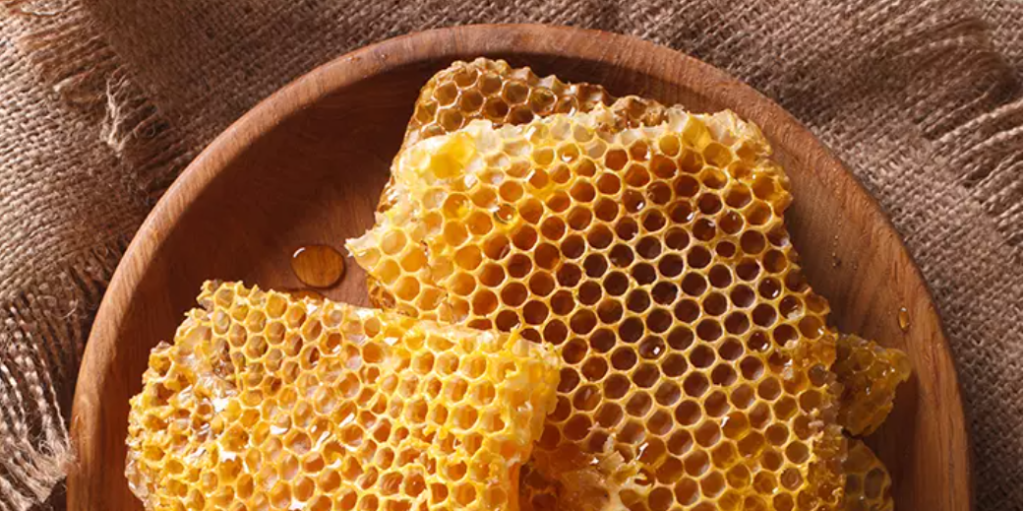The advantages of incorporating beeswax into your hair grooming and care routine have been acknowledged since ancient times. Cleopatra reputedly utilized beeswax to enhance the beauty of her hair and skin, while the Chinese have employed it in their cosmetics and beauty practices for centuries. Packed with antioxidants, beeswax serves as a protective shield, ensuring hair remains moisturized and warding off dryness and frizz. Beyond its historical role in waxing, beeswax also excels as a nourishing and styling agent for your hair. This article delves into the diverse benefits that beeswax offers for hair care, exploring its functionality and providing insights on effective usage. Keep reading to discover the wonders of beeswax for your hair!
What Is Beeswax?
Beeswax constitutes the material forming honeycombs within beehives. Bees produce wax to construct these structures for honey storage. Abundant in vitamin A and possessing moisturizing as well as antimicrobial attributes, beeswax serves as a natural resource. Individuals commonly utilize it in its solidified wax state for hair applications. Continue reading to explore the myriad advantages that beeswax can bestow upon your hair.
Benefits Of Beeswax For Hair
There are several ways that beeswax can help your hair. The top 5 benefits of beeswax on hair are listed below.
1. Moisturizes And Seals Strands
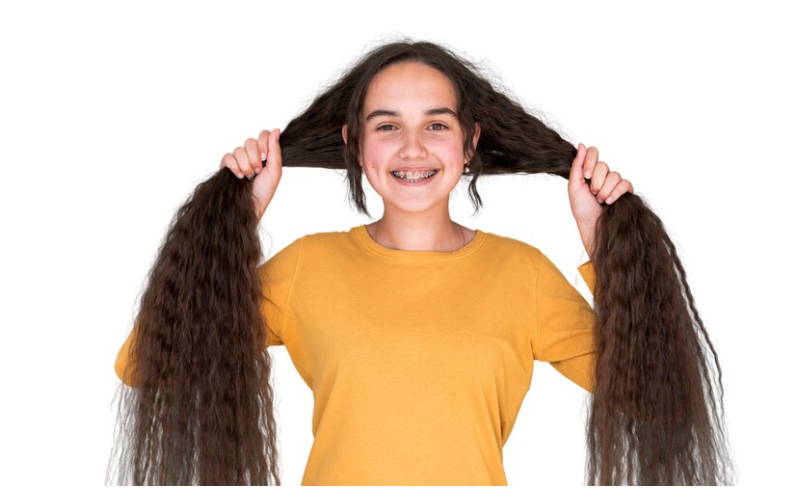
Beeswax boasts vitamin A content, purportedly contributing to hair moisturization, yet scientific evidence supporting this claim is lacking. However, the wax is believed to act as a sealant, preserving moisture within hair strands. Applying it lightly coats the hair, enabling the wax to trap moisture and tame frizzy or damaged ends. While not a permanent fix, this method can temporarily enhance the hair’s look and feel.
2. Does Not Cause Allergic Reactions
Using products containing harmful ingredients can potentially harm your hair strands. Beeswax, being organic, doesn’t contain any toxins that could cause damage to your hair. Moreover, it’s chemically safe, making it a great choice for nourishing your hair.
3. Promotes Hair Growth
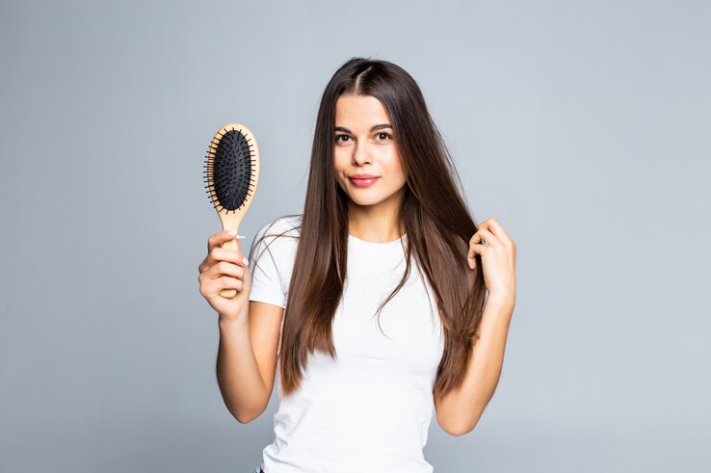
Beeswax has shown potential in enhancing hair growth. An animal study observed that using hair wax containing beeswax led to increased hair length in subjects within a span of 30 days (2). Similarly, other research noted improvements in hair growth with formulations incorporating beeswax (3). However, pinpointing beeswax’s sole contribution to this growth is challenging as these formulas contained additional ingredients. Nevertheless, these studies indicated that beeswax facilitated better application, ensuring uniform distribution across hair strands and enhancing binding properties, potentially aiding in hair growth (3).
4. Helps Soothe Certain Dermatological Conditions
Seborrheic dermatitis, a prevalent skin condition mainly impacting the scalp, causes scaly patches, irritated skin, and persistent dandruff. Beeswax has shown promise in preventing and alleviating this condition. A study investigating the effects of beeswax on individuals with psoriasis, eczema, and dandruff revealed that participants using a honey blend containing beeswax reported improvement within a two-week period (4).
5. Maintains Long-Wearing Hairstyles
Beeswax is a popular choice for dreadlocks as it aids in keeping the hair firmly in position. Mixing beeswax with a hair butter or carrier oil creates a styling treatment that effectively sets your hairstyle. It’s particularly beneficial for natural hair and various twisted and braided styles.
Related :5 BEST HAIR OILS FOR DANDRUFF – CONTROL THE ITCHING & FLAKING
These benefits highlight what beeswax can do for your hair. Interested in the best way to apply it to your tresses? Keep reading for the details.
How To Use Beeswax For Hair
The easiest and highly suggested method of including beeswax in your hair care routine is by utilizing it as a styling balm or pomade.
Here’s a step-by-step guide on using beeswax for your hair:
- Take a small amount of beeswax.
- Rub it between your palms until it melts due to the heat, making it easier to apply.
- Massage the melted beeswax into your hair using your fingertips. Concentrate on reaching the ends of your strands for better hold. Keep massaging until there’s no residue on your fingers.
- After applying sufficient wax, gently style your hair using a comb or brush. Using a hairbrush is recommended to evenly distribute the beeswax throughout your hair. Now that you’ve learned how to use beeswax on your hair, let’s review a few important points in the next section.
Here are some tips to keep in mind before using beeswax for your hair:
- Create a personalized hair treatment by mixing beeswax with a carrier oil like jojoba or coconut oil. Alternatively, lightly heat a small wax bar and apply it to damp hair.
- Avoid using beeswax daily, especially if you don’t wash your hair frequently, as it can lead to product buildup on your scalp.
- Use a small amount at a time to prevent excessive residue that requires extensive washing.
- Protect your hair while sleeping by wearing a headscarf or cover to maintain smoothness and minimize the need for frequent beeswax use.
- Individuals with fine or easily greasy hair should use beeswax sparingly or consider avoiding it altogether.
- Consider purchasing commercial styling blends that contain beeswax, ensuring you’re satisfied with the listed ingredients by checking the label.
Did You Know? Pure beeswax will never rot! This is due to the presence of a naturally occurring protective substance called propolis in it
Why Do People Use Black Beeswax For Hair?
Individuals choose black beeswax for their hair due to its natural and unprocessed nature, serving as an alternative to regular beeswax. Black beeswax aids in moisture retention, enhances hair flexibility, and provides a matte finish. Moreover, it imparts a black hue to the hair, making it a popular choice for styling and grooming purposes.
How To Get Beeswax Out Of Your Hair
Related :DISCOVER NATURAL BEAUTY:BEESWAX FOR HAIR, BEARDS, & DREADS
1. Apple Cider Vinegar Rinse
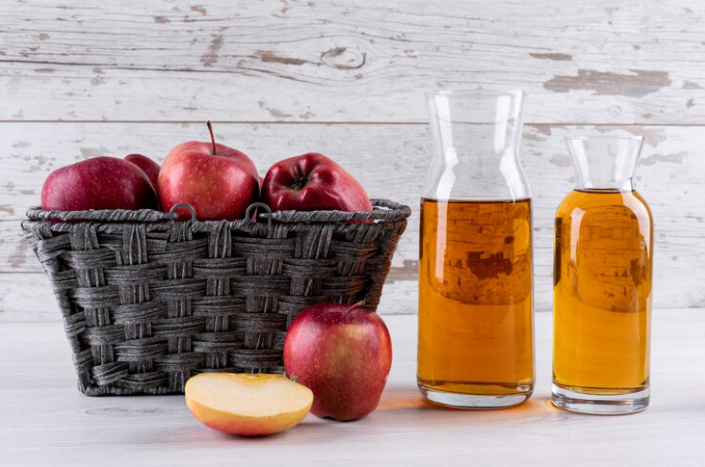
Apple cider vinegar (ACV) serves as a natural remedy for maintaining healthy hair and can be part of your hair care routine to remove beeswax buildup. Its antibacterial and antimicrobial properties are believed to rejuvenate the hair and scalp, addressing damage caused by buildup. Here’s what you’ll need and what to do:
You Will Need:
- 2-4 tablespoons of apple cider vinegar
- 1 cup of water
- A spray bottle
What To Do:
- Mix the ACV and water in a spray bottle.
- Apply the mixture onto the scalp and hair.
- Massage the vinegar gently into your hair and scalp using your fingertips.
- Allow the solution to sit for up to 5 minutes.
- Rinse it off using cool water.
- Follow up with a moisturizing conditioner.
- Conclude with a final rinse to ensure complete removal of both vinegar and beeswax.
Caution: Always dilute ACV with water before using it on your skin or hair to prevent irritation. Avoid using undiluted ACV.
2. Clarifying Shampoo Rinse
Here’s a simple method to remove beeswax from your hair using a clarifying shampoo:
You Will Need:
- Clarifying shampoo
What To Do:
- Wet your hair thoroughly from root to tip to open up the hair shaft.
- Take a small amount of shampoo on your hands and massage it into your scalp and hair.
- Ensure the shampoo is evenly distributed throughout the hair by massaging the scalp and hair. Avoid using your nails to prevent scalp irritation.
- Allow the shampoo to sit in your hair for a few minutes for optimal results.
- Rinse your hair thoroughly.
- Condition and style your hair as desired.
- For best results, use a clarifying shampoo once a week.
3. Natural Oil
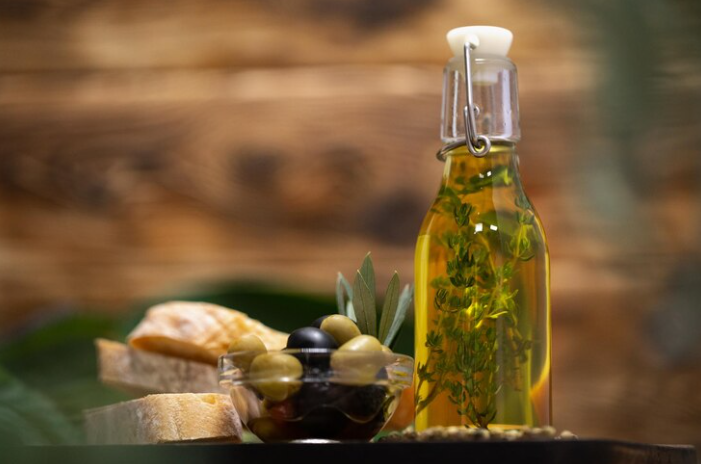
Here’s a method using natural oil to dissolve water-soluble beeswax buildup:
You Will Need:
1–2 tablespoons of olive oil/almond oil/jojoba oil
What To Do:
Pour 1–2 tablespoons of oil into your palm and apply it onto the beeswax using your fingertips.
Massage the oil through your hair until you feel the beeswax softening and crumbling.
Remove the softened beeswax from your hair.
Wash your hair with hot water using shampoo, then follow up with conditioner.
Repeat this process if there’s a substantial buildup of beeswax.
This technique helps dissolve water-soluble beeswax using natural oils, facilitating its removal from your hair.
4. Hair Dryer
Here’s a method using a blow dryer to remove beeswax from your hair:
You Will Need:
- A hair dryer
- Paper towels
What To Do:
- Wrap paper towels around the sections of hair coated with beeswax.
- Set the hairdryer to low-medium heat and aim it at your hair through the paper towels.
- As the beeswax starts melting, press down on it with the paper towels and remove it from your hair until it’s completely gone.
- Wash your hair with shampoo and hot water, then follow up with conditioner.
This technique utilizes the warmth from the blow dryer to melt the beeswax, facilitating its removal from your hair with the help of paper towels. Afterward, wash and condition your hair as usual.
Quick Tip Here's a quick tip for removing beeswax from your hair: Try using cool therapy by rubbing ice over the beeswax. This can help break down the wax for easier removal.
5. Dishwashing Soap
Here’s a rather unconventional method: using dish soap to remove tough beeswax from your hair. However, it’s crucial to ensure the dish soap is suitable for your hair type, as some types may damage your natural curls.
You Will Need:
- 2-3 drops of dishwashing soap
What To Do:
- Wet your hair and scalp.
- Take 2-3 drops of dish soap into your palms and lather it up.
- Apply the lather to the entire length of your hair, working it through the beeswax.
- Rinse your hair thoroughly, then shampoo and condition it.
Now that you’ve learned about the benefits of beeswax, how to use it, and ways to remove it from your hair, it’s important to be aware that it may have some side effects. You can explore these potential side effects by scrolling down!
Side Effects Of Beeswax For Hair
- Beeswax has a waxy/oily texture that isn’t easily soluble in water, making it challenging to remove. A regular hair wash might not suffice.
- When using pure beeswax, avoid getting it on your scalp as it’s heavy and sticky, potentially clogging skin pores and causing scalp irritation.
- Because of its sticky nature, beeswax can trap dust, dirt, and other debris in your hair.
- In cold weather, particularly for those with dark hair, beeswax may harden and appear whitish in the hair.
- Using excessive beeswax can lead to heavy, lifeless-looking hair over time.
- YouTuber Eden Croft shared her experience with beeswax, mentioning its potential to cleanse pores and act as an emulsifier in shaving cream. She even uses it as a face wash (i).
Infographic: Top Benefits Of Beeswax For Hair
Beeswax, enriched with vitamin A, serves as an outstanding hair moisturizer. Beyond styling, it shields your hair from heat and boosts its shine. Moreover, being a natural substance, beeswax doesn’t harm your hair or scalp. Take a look at the infographic below for the key benefits of incorporating beeswax into your hair care routine.
The Bottom Line
In hair care, beeswax has stood the test of time for good reasons. Being entirely natural, it lacks the harmful chemicals often present in other hair products. It’s a great option for maintaining straight hair, managing frizz, and addressing skin conditions. Yet, excessive use can lead to scalp buildup, potentially causing infections and damage. Regular and thorough washing is essential to remove it from your hair.
Frequently Asked Questions
Is beeswax suitable for all hair types? Beeswax is generally suitable for most hair types, but individuals with fine or thin hair might find it slightly heavy. It’s advisable to use minimal amounts.
Can beeswax help with hair growth? While it doesn’t directly promote hair growth, beeswax aids in maintaining healthier hair, preventing breakage and split ends, which indirectly supports growth.
Does beeswax cause any scalp issues? When used in moderation, beeswax rarely causes scalp issues. However, individuals with sensitive skin should perform a patch test before widespread use.
Can beeswax be used with other hair products? Yes, beeswax can be used alongside other hair products. However, using it excessively or in combination with heavy styling products might lead to build-up.
Is it difficult to remove beeswax from hair? With the right technique, removing beeswax from hair isn’t too challenging. Using warm water and mild shampoo helps dissolve the wax for easier removal.
Is beeswax a natural product? Yes, beeswax is a natural substance produced by honeybees. It contains no synthetic additives, making it an organic choice for hair care.

